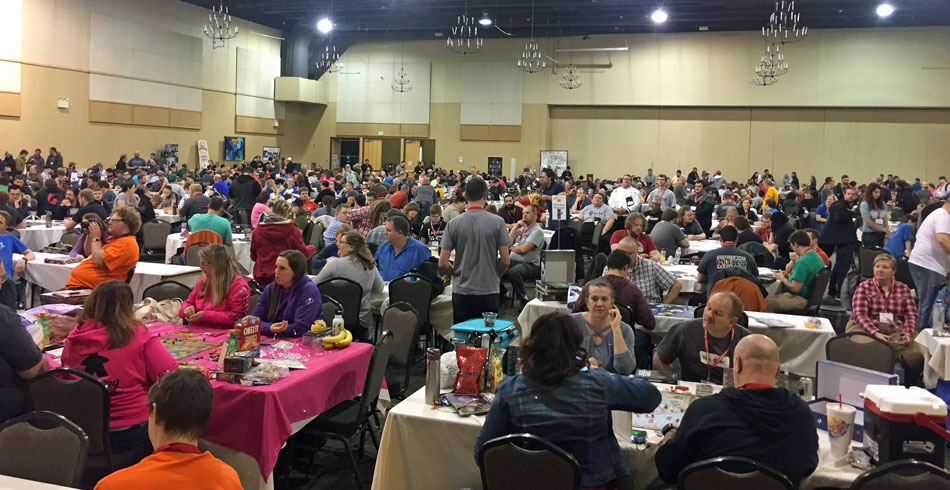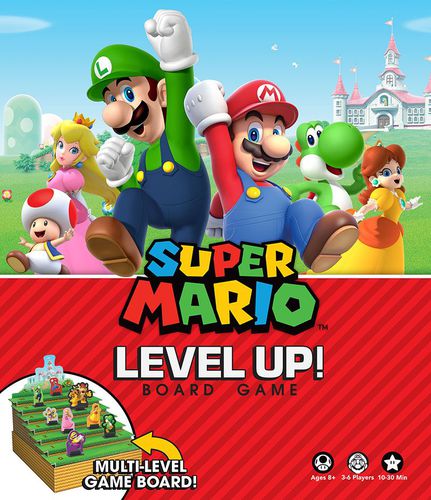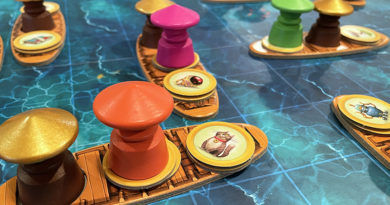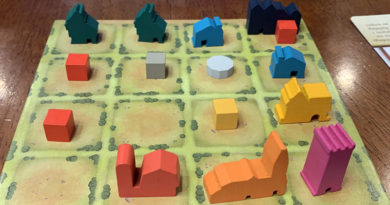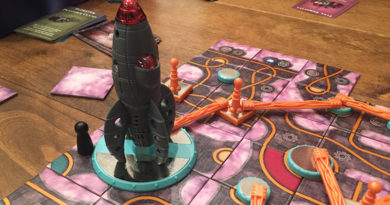Divinity Derby board game review
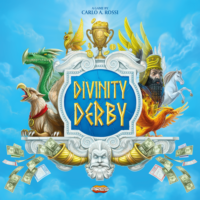
Did you know mystical beasts like to race each other?
Well, Zeus has cooked up some races between Pegasus, Phoenix, Dragon, Gryphon, Sylph, and Lamassu and you and your buddies get to bet on the outcomes in Divinity Derby by Ares Games.
But it’s not as simple as guessing who will win. There are plenty of other options and twists awaiting you in this board game.
And the biggest twist for me is how completely surprised I was by the fun I’ve had playing Divinity Derby!
When I first heard from Ares Games about Divinity Derby, I didn’t think much of it. After the game arrived, I took a quick look at the rules and because the game play isn’t very complicated, and it plays up to 6 players, I decided to give it a shot soon after.
That’s when I discovered how much fun it was!
But before I dive into why, I better first explain how to play Divinity Derby.
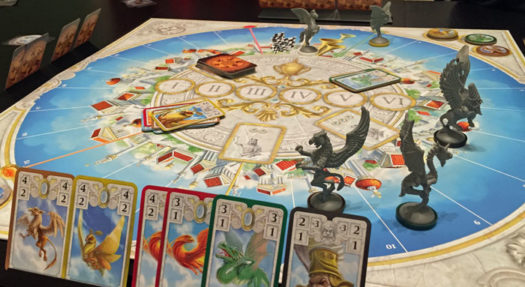
How to play Divinity Derby
Divinity Derby is super simple to learn and play.
The objective of the game is to earn the most points from correctly betting on how the mystical creatures will finish over 3 races.
To begin, each player gets a set of 11 betting cards that include a variety of finishing options from coming in first or first / second / third, or coming in last or last / second to last, or even being disqualified.
The race cards are then shuffled and dealt out to the racks which sit between each player.
That’s right – in Divinity Derby players don’t get a hand of cards. Instead they share cards between the player on their left and the player on their right.
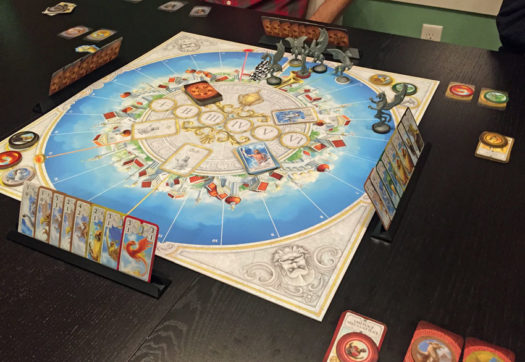
Then, even before the first race begins, players take turns placing bets on the outcome. With just the knowledge of the race cards they can see in the two racks next to them, they judge how the race will turn out.
To place a bet, a player takes a betting card from their set and selects a mystical creature token from the board to place on it face down in front of them. Then the next player places their bet and so on. If there aren’t any tokens left of that creature, a player cannot place a bet on them.
After players have placed their first bet before a race, they repeat the process and place a second bet.
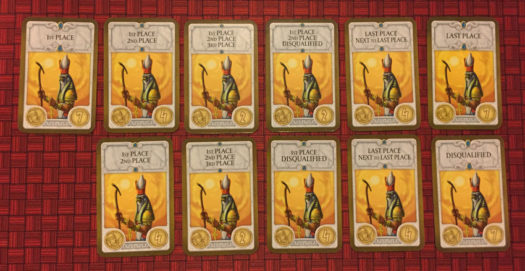
Then the race begins.
On their turn a player chooses one card from the rack on their left and one card from the rack on their right. Then they choose which order to play the cards. The first card they play will use the top number on the card (higher number) while the second card they play will use the bottom number on the card (lower number). After playing a card, the player will move the creature that number of spaces on the race track.
If a creature lands on a space where another creature already is, the newly arrived creature is placed to the inside. This indicates they are farther ahead in the race than those toward the outside of that same space.
For normal movement, the cards are placed on the discard pile.
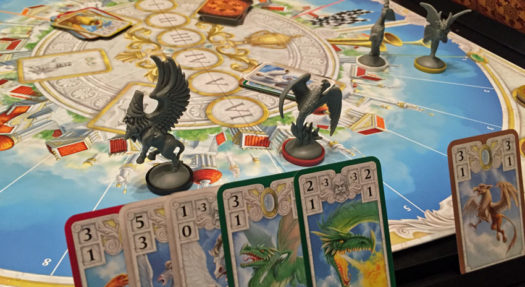
However, some cards allow the creatures to move extra spaces. These cards show a more aggressive depiction of the creature and have an additional + number at the top. When played first, the creature can add both numbers together to move much farther. The catch is that this is considered a “Dirty Trick” and the card must be placed on the Zeus’ Judgement pile.
After a player has played 2 cards and moved the creatures, play continues to the left.
When the first creature crosses the midway line on the racetrack, all players place their third and final bet of the race. The player to the left of the player who moved the creature across the midway line gets the Start Player marker and begins the betting. It’s done in the same manner as at the start of the race. After everyone has placed their third bet, the new start player continues the race by playing cards.
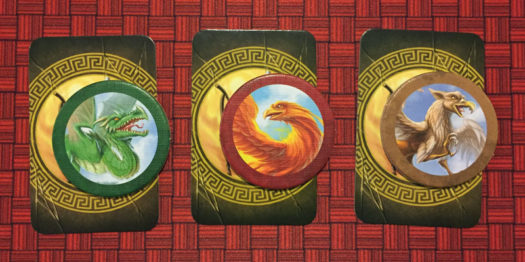
The race continues until all the race cards have been played.
If a creature crosses the finish line during the race, they’re moved to the final standings spaces in the order they finish. However, most creatures won’t cross the finish line before the final card is played. At the end of the race, the creatures are placed on the final standings spaces in their current standing order.
But that’s not really the final standing – yet!
Players then take the pile of cards in the Zeus’ Judgement space, shuffle them and draw two random cards. If a drawn card shows a creature, that creature is Disqualified from the race because of their Dirty Tricks and is removed from the standings! All other creatures move ahead to fill the gap.
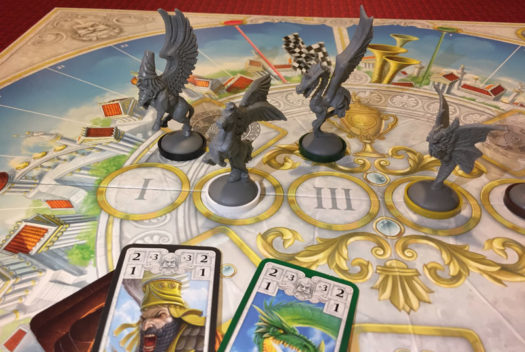
Then players reveal their bets to see which they got correct.
Those they got correct are set aside face down under their player disc and those they got incorrect are discarded. In all cases, players will not have these cards to use for betting on future races.
After the first race, everything is reset for the second race. Once again race cards are all shuffled together and dealt out to the racks. Then starting with the Start Player, bets are placed for the second race and then it begins.
The same thing is done after the second race – reset for the third and final race.
After the third race is over, all players tally up their score from their correct bets from each race. The player with the highest total is the winner!
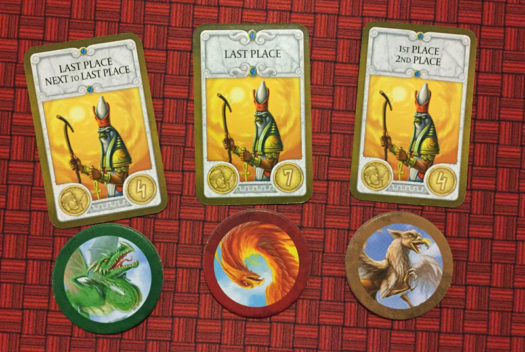
Can the whole family enjoy Divinity Derby
Divinity Derby is a great family game.
The recommended age on the game box is 10+. But kids younger than 10 can definitely enjoy playing as well. That being said, since the terms of the game say you’re “betting” on races, we’ll leave it to you on when you care to introduce the concept to your youngsters.
Since there really isn’t any money or wagers involved though, we refer to it as just picking how the creatures will finish the race.
As you can see, the game is very simple to understand. Players of all ages can grasp the concept of choosing a card and moving that piece that number of spaces. The tricky part is guessing what the other players are going to do.
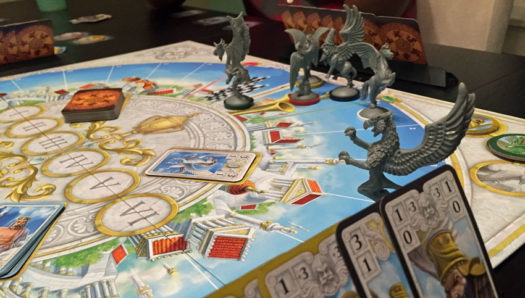
If it was only up to you, there’s no doubt you could pick a winner and use the cards at your disposal to move them how you’d like.
But your neighboring players – who can see half of the same cards as you can – may even have other plans!
So watching which creatures the other players are picking to place bets on may give you some indication of which they’ll be moving. Or not!
Although you may see which they pick, what you won’t know is if they’re picking them to finish first or last or be disqualified. And that’s the beauty of the game!
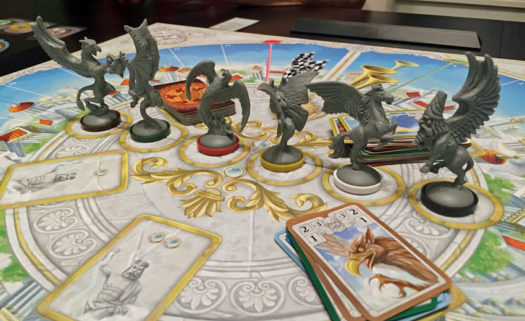
For each race you’ll get to choose 3 of your betting cards to play and 2 of those will be played before anyone moves a single creature. So do you go conservative or bold?
Perhaps you’ll wait until a creature crosses the mid-point line before placing your big value bets.
But the catch there is that there may not be any tokens left for the creature you’ll want to bet on. At that point you may clearly see that Pegasus is going to win. But if all the Pegasus tokens are already taken, you’re out of luck with picking him to win if you haven’t already done so.
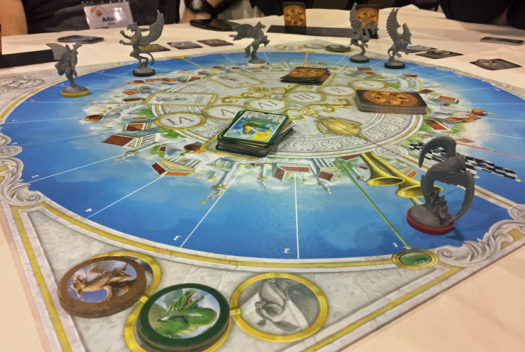
And if you’re the player who moves a creature across the mid-point line, you’ll be the last to place your third bet. So once again you may be stuck with some tough choices among which tokens are left.
And in all cases, by the time the third race happens, you’ll be left with even less betting cards to choose from. Since you don’t get your betting cards back after a race, even choosing which cards to play in each race is a tricky proposition.
Then all to all that the chance for Disqualification as well.
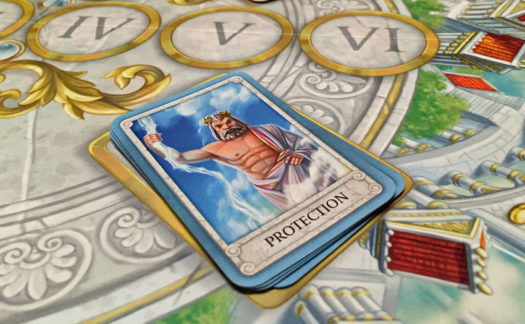
Some players will be hoping for a certain creature to win and moving them ahead every chance they get. But other players may be using that creature’s Dirty Tricks extra moves to keep it moving fast but hoping it will be disqualified. So the random draw at the end of each race to see which, if any, creature is kicked out of the race keeps everyone on their toes.
And the element of choosing one card from your left and one from your right is fantastic. Knowing those cards may not be used the way you hope is a bit of a challenge. Because you may see a great card to move a creature you want ahead many spaces. But then your neighbor chooses to use that card for the lower value.
It all makes for a lot of interesting choices – including timing.
So while there are certainly elements of luck in the game, players still have their influence on how each race progresses. And over the course of 3 races you’ll most likely need to shift your tactics based on how the other players are doing.
Which all makes for a lot of fun!
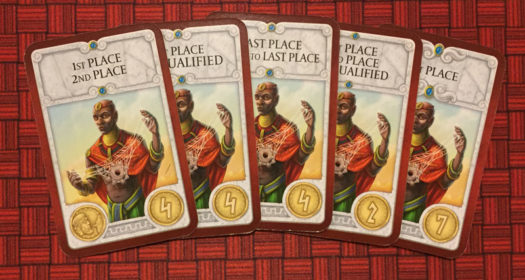
How does Divinity Derby score on our “Let’s Play Again” game meter?
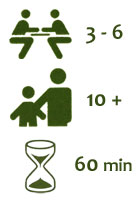 Divinity Derby scores high on our “let’s play again” game meter because of all the reasons I’ve mentioned above. The game play is easy to learn and remember. The game flow is very quick and smooth. The choices are interesting but not overbearing. And the element of guessing what the other players are going to do changes every game.
Divinity Derby scores high on our “let’s play again” game meter because of all the reasons I’ve mentioned above. The game play is easy to learn and remember. The game flow is very quick and smooth. The choices are interesting but not overbearing. And the element of guessing what the other players are going to do changes every game.
For a game that’s just about racing around a track 3 times you might think there isn’t a lot of variability. But because so much depends on what other players do, the game will play out differently every time.
We love the level of player interaction as everyone tries to influence the outcome of each race.
Divinity Derby gets a hearty recommendation from us.
If you’re looking for a light board game with interesting choices and player interaction, give Divinity Derby a shot.
We’d like to thank Ares Games for a review copy of Divinity Derby.

